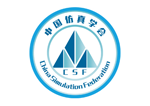Journal of System Simulation
Abstract
Abstract: In order to improve the capacity of absorbing the wind power, power grid requests heating units to reduce the power load limit as far as possible. Turbine exhaust steam flow is a main parameter which determines power load limit. By analysing the balance of the mass-energy on vapor flow, and choosing the condensate flow and enthalpy rise of condensate and enthalpy drop of number 6 low pressure heater as auxiliary variables, soft-sensor method of low pressure cylinder exhaust flow is established. Furthermore, number 7 and number 8 extraction pressure and temperature are chosen simultaneously and dynamic low pressure cylinder exhaust flow is calculated by FlÜGEL formula as dynamic compensation. The comparison between the static operating data of a 330 MW heating unit, the disturbance experimental data of low-pressure valve and extraction valve show that the accuracy and the dynamic respond speed of the soft-sensor signal satisfy the in-field requirements.
Recommended Citation
Liang, Tian and Tong, Wang
(2019)
"Soft-sensor Method of Low Pressure Cylinder Exhaust Flow of Heating Units,"
Journal of System Simulation: Vol. 30:
Iss.
5, Article 23.
DOI: 10.16182/j.issn1004731x.joss.201805023
Available at:
https://dc-china-simulation.researchcommons.org/journal/vol30/iss5/23
First Page
1803
Revised Date
2016-08-01
DOI Link
https://doi.org/10.16182/j.issn1004731x.joss.201805023
Last Page
1811
CLC
TK273
Recommended Citation
Tian Liang, Wang Tong. Soft-sensor Method of Low Pressure Cylinder Exhaust Flow of Heating Units[J]. Journal of System Simulation, 2018, 30(5): 1803-1811.
DOI
10.16182/j.issn1004731x.joss.201805023
Included in
Artificial Intelligence and Robotics Commons, Computer Engineering Commons, Numerical Analysis and Scientific Computing Commons, Operations Research, Systems Engineering and Industrial Engineering Commons, Systems Science Commons

